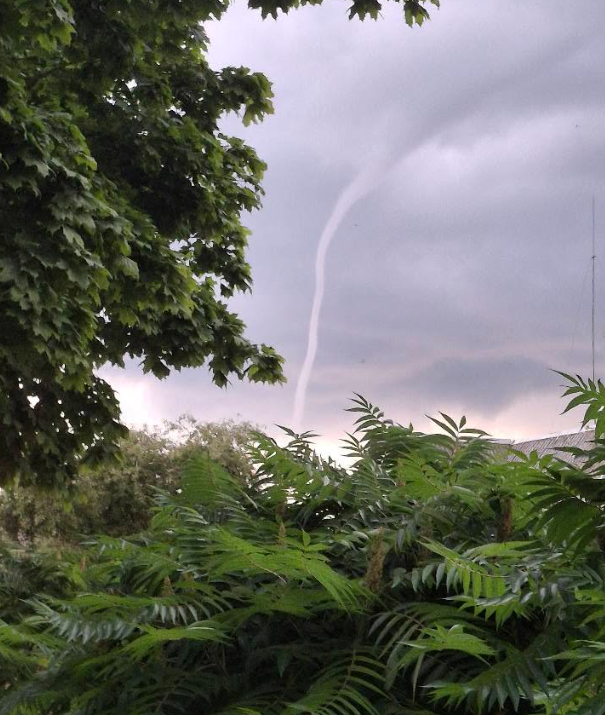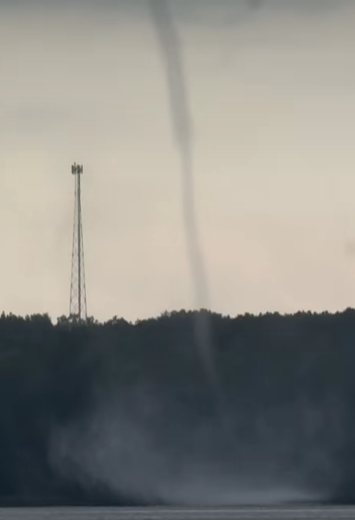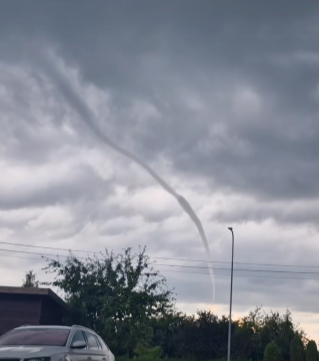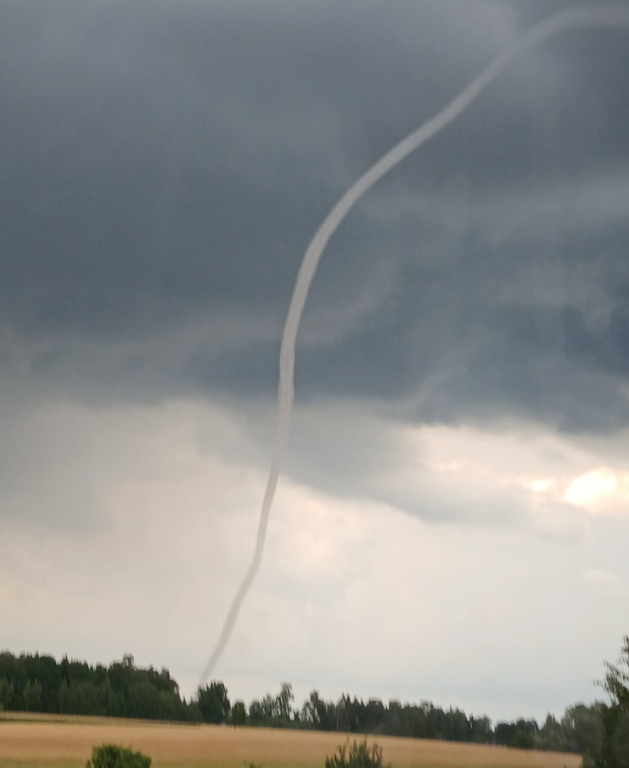
On the afternoon of Tuesday, July 15, 2025, a small waterspout was observed near the town of Rumšiškės, Lithuania, located at coordinates 54.85°N, 24.20°E, over the Kaunas Reservoir. The event occurred around 17:20 UTC (± 15 minutes) and was witnessed by several local observers. Thanks to a combination of eyewitness reports, website documentation, and multiple photo and video recordings shared on social media, the waterspout’s occurrence is well confirmed and classified as a genuine tornado phenomenon.
The waterspout formed as a narrow, funnel-shaped column of rotating air extending from the base of a cloud down to the surface of the reservoir’s water. While waterspouts are more common in coastal or large-lake environments, this event highlights that they can also form over inland bodies of water under the right atmospheric conditions, even in regions like Lithuania, which generally experiences a temperate continental climate.
Importantly, no significant damage was reported from this waterspout. It remained over the water throughout its visible lifespan and dissipated without affecting any nearby infrastructure or settlements. Minor disturbances on the reservoir’s surface and some brief wind gusts were likely the main effects. The lack of damage and limited size classify this tornado event as low intensity, typical for waterspouts in such settings.
The event was extensively documented online, especially within the Lithuanian Facebook group Orų entuziastai (“Weather Enthusiasts”), which played a crucial role in gathering and verifying reports, photos, and videos. These social media contributions allowed for a detailed reconstruction of the waterspout’s timing, appearance, and location. Voluntary observer Lukas Sudvajus officially confirmed the event with a high reliability status (QC1), indicating that this report has passed quality control checks and is considered accurate.
Meteorologically, waterspouts form through convective processes where warm, moist air rises and begins to rotate under specific wind shear conditions. In the case of Rumšiškės, localized summer heating combined with moisture over the reservoir likely contributed to the waterspout’s formation. Such phenomena are generally short-lived, lasting from a few minutes to a quarter of an hour, and tend to be relatively weak compared to land-based tornadoes.
This occurrence underscores the occasional presence of tornadic activity in Lithuania and the Baltic region, which, while rare compared to more tornado-prone areas, still experience convective storms capable of producing small waterspouts and weak tornadoes. Monitoring and documenting these events helps meteorologists better understand regional severe weather potential and improve local forecasting.
While this waterspout did not cause damage, it serves as a reminder of the dynamic nature of summer weather in Lithuania. For residents and visitors near large lakes and reservoirs, awareness of such phenomena is important, especially as climate variability may influence the frequency and intensity of convective storms.
In summary, the July 15, 2025 waterspout near Rumšiškės was a well-documented, confirmed event occurring over the Kaunas Reservoir, producing no damage but attracting attention due to its clear visual presence and rarity in the region. Such observations enrich Lithuania’s meteorological records and contribute to the growing database of tornado and waterspout events in Northern Europe.

Source: https://www.facebook.com/reel/725238696793139

Source: https://www.facebook.com/reel/1300720538240595

Source: https://www.facebook.com/photo/?fbid=2129486460905465&set=pcb.2156828668115292

Source: https://www.facebook.com/photo/?fbid=10223959553937210&set=pcb.2156829691448523


























